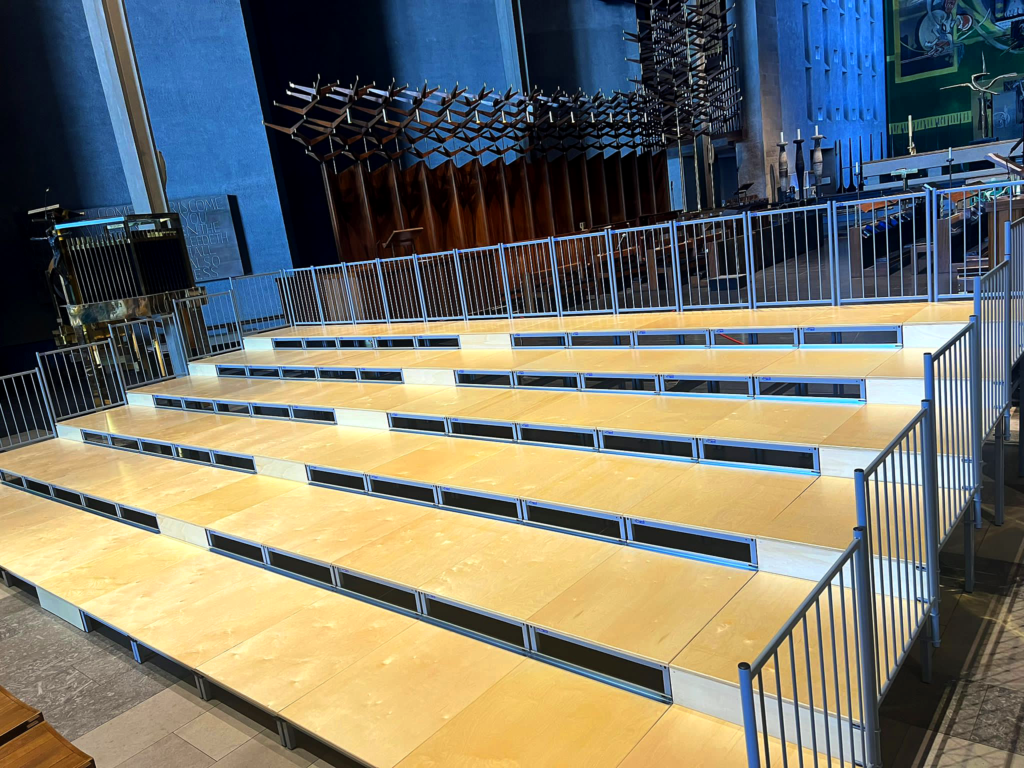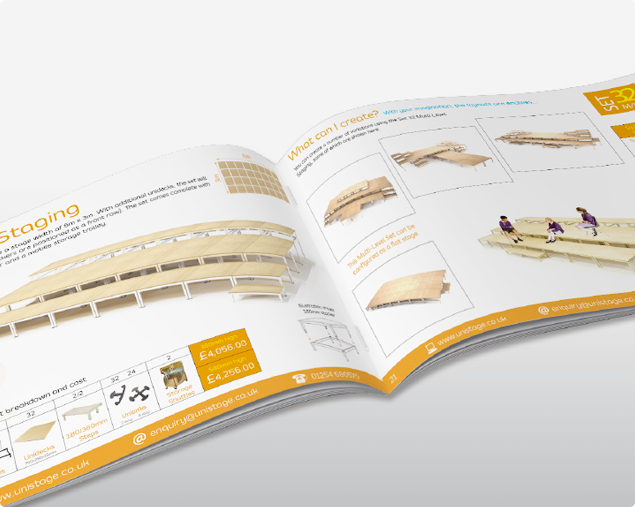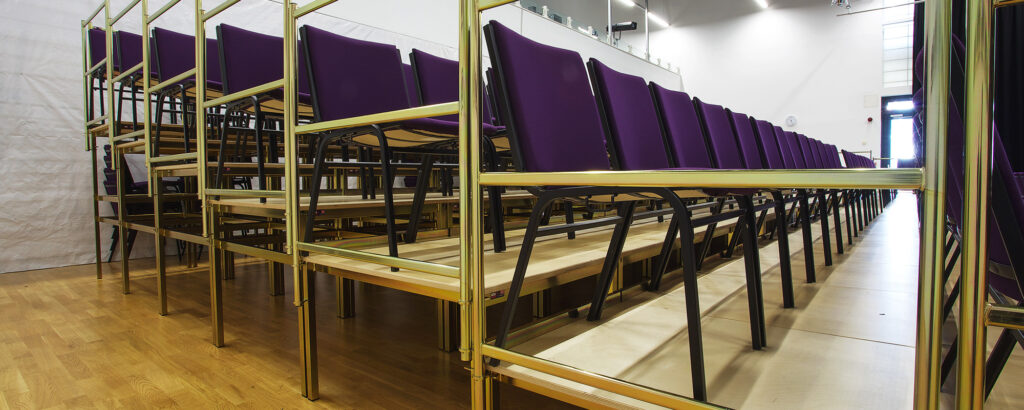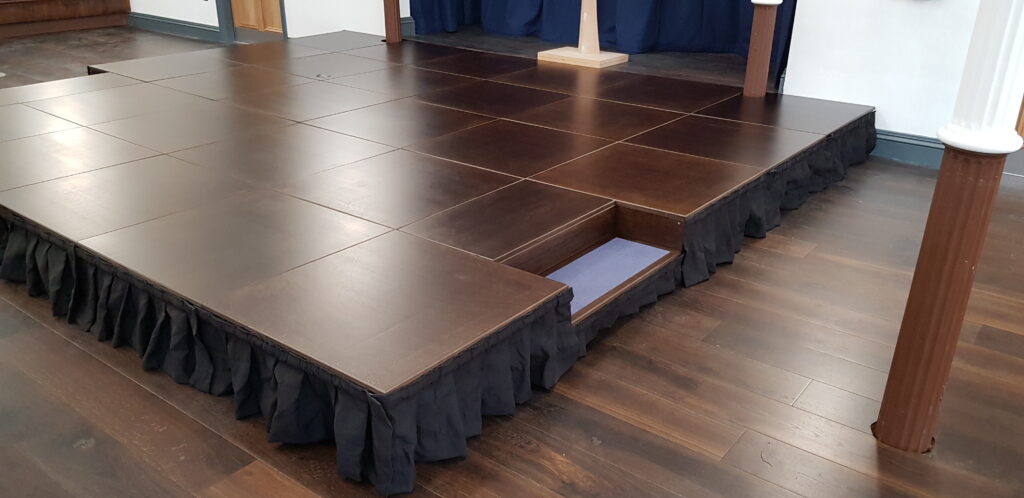free stage
design!
We create bespoke stage solutions
Looking for a custom stage? Speak to our team
A History of the Stage – Part 3
26Sep, 2016
A History Of The Stage – Part 3
[/fusion_title][/fusion_builder_column][/fusion_builder_row][/fusion_builder_container][fusion_builder_container hundred_percent=”no” equal_height_columns=”no” hide_on_mobile=”small-visibility,medium-visibility,large-visibility” background_position=”center center” background_repeat=”no-repeat” fade=”no” background_parallax=”none” parallax_speed=”0.3″ video_aspect_ratio=”16:9″ video_loop=”yes” video_mute=”yes” overlay_opacity=”0.5″ border_style=”solid” admin_toggled=”no”][fusion_builder_row][fusion_builder_column type=”1_1″ layout=”1_1″ background_position=”left top” background_color=”” border_size=”” border_color=”” border_style=”solid” border_position=”all” spacing=”yes” background_image=”” background_repeat=”no-repeat” padding=”” margin_top=”0px” margin_bottom=”0px” class=”” id=”” animation_type=”” animation_speed=”0.3″ animation_direction=”left” hide_on_mobile=”small-visibility,medium-visibility,large-visibility” center_content=”no” last=”no” min_height=”” hover_type=”none” link=””][fusion_text]At the end of our previous installment of A History Of The Stage, we observed how the Medieval period of theatre that followed the Roman Empire’s dissolution saw a monopoly on theatrical productions by the church.
We also took note of the breaking of these centuries of religious restrictions in the 1500s, as governments across Europe vastly reduced the church’s power – most notably by Henry VIII and Elizabeth I in England, the latter of whom went as far as to reverse the oppression, outlawing religious driven plays themselves!
This brings us to Part Three of our story. A golden period of expansion, experimentation and discovery, which saw rapid advancements in the artform and technological advancements to the stage.
This is a History of the Stage.
Part Three: Of Shakespeare, Vicente & The Commedia Dell’arte

In parallel with the dissolution of religion’s grip on theatre and the stage across the 1500s, the second half of the 1500s saw revolutions in Italy, Spain and England which shaped forthcoming era of Renaissance theatre.
It began, as much of modern theatre has tended to do, in Italy.
In the 1560s, the former fatherland of the Roman Empire and a stronghold of Catholicism began to expand theatrical activities within the comfort of their own borders. Whilst so many of their performers had faced centuries of oppression from the puritanical, orthodox church, within the borders of Italy, progression had continued.
Commedia Dell’arte, a shortened version of Commedia Dell’arte All’improvviso, is best translated as ‘comedy of the craft of improvisation’. It became the first recognised form of improv comedy and later sketch comedy.
Making use of stock social stereotypes, such as sly servants, daft old men and false bravado soldiers, touring companies of Commedia Dell’arte would tour on the road, taking set dates in large established cities, such as venice or florence.
As they were touring companies, they made use of very minimal staging and props, instead preferring to utilise areas of significant scenery as the backdrops – in a very early example of what film would later term: shooting on location.
Expansion Across Europe & Development

As the form advanced and eventually spread across Europe, different countries began to add their own spin to the idea. In 18th century France, an advanced form of Commedia Dell’arte became recognised as the first Pantomime, a form which became very popular in the UK in the 20th century and greatly expanded in its extravagance.
Another very popular format that derived from Commedia Dell’arte was Punch & Judy – specifically the Punch character, which evolved from the Pulcinella mask, a famous Naples orientated version of improv comedy.
Punch and Judy shows are famous for their box stages – in which the performers are seated behind a screen and cast their voice on behalf of puppets up to the performance space above their heads.
The advancement of these forms and their popularity still to this current day goes to prove how captivating this period of the stage’s history really was.
The Spanish Golden Age

Approximately 40 years after Commedia Dell’arte was beginning to break out in Italy a major social revolution was occurring across the mediterranean in Spain. The high society nobility in Spain was rapidly advancing its production of live theatre, with an equally rapidly increasing audience of the working class who were willing to pay to watch it.
Whilst the rest of Europe was locked in individual battles of all religious drama or no religious drama, Spain’s Golden Age of 1590-1681 was unique for its equal portrayal of religious and nonreligious theatre.
In this period, the sheer volume of plays produced was enormous, averaging up to four times the amount being produced in England at the time. The reigning Monarch Ferdinand II of Aragon was a profound supporter of the movement and sponsored a lot of productions through the state.
Religious theatre of the time toured the city in ‘carros’. These were two-story wagons, an advanced variation of the Medieval pageant wagons we covered in the previous installment. Productions tended to be funded both by private acting troupes and sponsored Authorities.
However the bulk of Golden Age Spain’s occurred inside, in specially constructed theatres. The first theatre, the Corral de la Cruz was built in 1979 and featured an in-built thrust stage, with seating on all three sides in raised balconies and end on in the hall floor.
Plays performed in this space would often run for 2-3 hours flat, every afternoon, with no intermission. They tended to be comedies, whether outright, romantic comedies or black tragedy comedies.
By 1625, performances were being put on in the King’s royal court, with an entire area of the royal palace being set aside for the monarch’s personal performances.
The impact of the Spanish Golden Age and specifically the works of playwrights Gil Vicente and Lope de Vega was profound. Whilst the western world tends to look back upon Renaissance England as the birthplace of modern theatre and perhaps rightfully so, it’s equally important to remember that Renaissance England was very, very heavily influenced, both in form and in subject matter by Golden Age Spain.
How Shakespeare Bowed To The Queen

In the 21st century, William Shakespeare has probably become renowned as the most famous playwright of all time. Whether he is fully worthy of that title or not is a debate for another time but what is apparent is that he has come to personify a time when theatre changed into the mainstream form of entertainment it later became famous for being.
The English Renaissance is generally regarded to have begun with the ascension of Elizabeth I to the throne in 1558, although it would not be until the opening of Burbage’s ‘Theatre’ some twenty years later.
Whilst the theatres used in Shakespearean times each had their own unique differences, the layout for the space most often tended to remain the same. The buildings were three stories high and built around a platform in the centre, in an oblong shape – leaving only space at the rear for actors to enter and exit the stage.
This was done to maximise capacity and by 1610 London’s capital capacity for theatres was 10,000 – a huge number for that time.
The public availability of plays was the direct wish of Elizabeth I, who remained steadfast that she should be seeing the same works that the public could. This would change drastically when James the IV of Scotland became James I of England & Ireland in 1603 following Elizabeth’s death.
Under James I, theatrical productions tended to become more skewed towards those in privileged positions and subject matter of plays began to shift to suit them. This shift began to occur in the middle of Shakespeare’s writing career and the second half of his work noticeably and interestingly began to take on a darker, more tragic comedic tone.
Theatre in London remained popular nevertheless, however a drastic change was upon us. The puritan movement in the capital was growing ever stronger and diametrically opposed theatre, as it was seen as a vanity by the monarchy.
In 1642, the English Civil War broke out and the puritanical Roundheads gained control of London in September of that year. Theatrical productions were outlawed immediately. The effects of this spread as far and as wide for major theatres to be closed, although most were repurposed into other buildings – if only temporarily.
Whilst there were still back-alley and hidden performances that occurred around the city in this time, it wasn’t until 18 years later that plays became common place again, when the ban was lifted with the restoration of the monarchy.
The restoration of the monarchy saw the birth of its namesake Restoration comedy – a socially driven form of comedy which has evolved to this date into the idea of Comic Relief, following the period of the English Civil War.
The Restoration Spectacular movement took precedence in the late 1600s with stage shows becoming overtly crude and creating the genesis of the burlesque movement.
Into The Future
Following the Restoration, theatre across Europe entered a period of satisfaction. For the next two centuries, theatre and the stage plateaued.
In the late 1700s the Industrial Revolution began and in the late 1800s and was followed with the dubbed ‘Technological Revolution’.
These periods of rapid technological growth meant that the stage soon became subject to similar advancements.
The fourth and final part of our tour through stage history will document the technological advancements the stage as it progressed into the 20th century through all the way until the present day.
We’re about to touch home in A History of the Stage.
[/fusion_text][/fusion_builder_column][/fusion_builder_row][/fusion_builder_container]Recent Case Studies

Coventry Cathedral
Complete seated tiering installGrab a copy of our brochure

our free
brochure
Can we send you a design of how your stage may look?
Download a copy of free our most recent brochure for more information on our products and services. You will be able to browse stage options and accessories.


